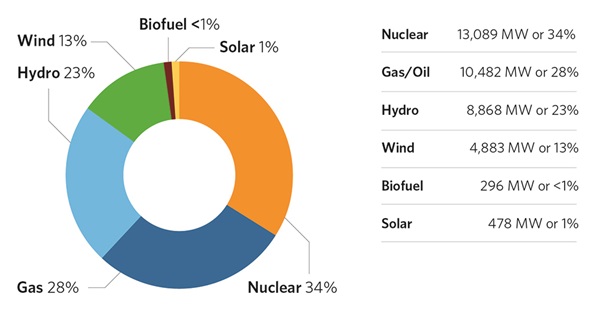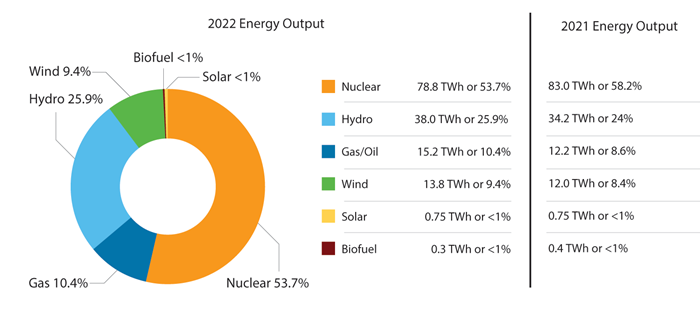2022
Ontario electricity demand reflects a rebounding economy in 2022
Electricity demand in Ontario grew by 2.8 per cent in 2022, rising to 137.5 Terawatt hours (TWh) as a result of the province’s economic recovery coming out of the pandemic.
The biggest recovery in 2022 came from small businesses, as the return to office and the reopening of many retail stores drove electricity use up by almost seven per cent over 2021. Residential demand held steady over the year while industrial and commercial sectors together saw a consumption increase of roughly four per cent.
Last year’s increase in energy demand was met by a shifting mix of generation types. Output from nuclear facilities was the lowest in almost two decades as a result of ongoing refurbishments and maintenance outages. Natural gas, hydro and wind generation all increased output, with hydro seeing its highest contribution since 2008. Ontario’s wind and gas generation each produced around 10 per cent of total provincial supply.
Electricity consumers – both large and small – also continued to make an important contribution to the system. For example, large businesses participating in the Industrial Conservation Initiative shaved six per cent from the 2022 summer peak demand.
Capacity
Grid-connected capacity in 2022 totalled 38,096 MW.


